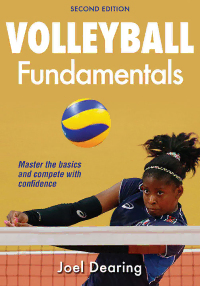
Volleyball Fundamentals PDF
82.74 MB·English
Most books are stored in the elastic cloud where traffic is expensive. For this reason, we have a limit on daily download.
Preview Volleyball Fundamentals
Cover Page: Cover Page Title Page Page: Cover Page Copyright Page: i Contents Page: ii Acknowledgments Page: iii Introduction Page: iv Key to Diagrams Page: ix Chapter 1: Volleyball Basics Page: x Chapter 2: Serving Page: 8 Chapter 3: Receiving the Serve Page: 20 Chapter 4: Setting Page: 29 Chapter 5: Attacking Page: 45 Chapter 6: Blocking Page: 60 Chapter 7: Digging Page: 74 Chapter 8: The Libero Page: 86 Chapter 9: Team Defense Page: 96 Chapter 10: Free Ball Page: 112 Chapter 11: Team Offense Page: 120 Chapter 12: Transition Page: 133 Chapter 13: Modified Games Page: 144 Chapter 14: Scoring Systems Page: 154 About the Author Page: 164
Description:Learning to play volleyball has never been more effective—or more fun—than with Volleyball Fundamentals, Second Edition. Parents, coaches, and instructors of volleyball skill courses will immediately benefit from the solid foundational information and practical tips on how to teach every aspect of the sport. Players will enjoy using this resource because they will learn by doing—spending less time reading and more time engaged in playing the game. Volleyball Fundamentals begins by teaching the basics that get players ready to take the court. The book covers positioning and the importance of reading the opposing players, communicating with teammates, and preparing for movement on the court. The guidance on formations and rotations will help students get an immediate sense of where they belong on the court. Clear instructions, accompanied by illustrations, for drills help players master specific skills such as serving, receiving a serve, setting, attacking, blocking, and digging. Each skill is introduced through a simple four-step sequence: • You Can Do It: The skill is introduced with sequential instructions and accompanying photographs. • More to Choose and Use: Variations and extensions of the primary skill are covered. • Take It to the Court: Readers learn how to apply the skill in game play. • Give It a Go: These sections provide direct experiences—such as drills, small-sided games, and six-versus-six gamelike activities—for the reader to use to gauge, develop, and hone the skill. Throughout the book, teaching cues offer advice for avoiding common mistakes. New to this edition is a chapter on how to effectively use the libero position (defensive specialist) in game play. Sections on offensive and defensive tactics, scoring systems, rules, and modified games have also been updated to make the game as easy for you to teach as it is for your students to learn. As part of the Sports Fundamentals Series, Volleyball Fundamentals will help you teach the basic skills and tactics of the game so that your players can compete on the court in no time at all.
See more
The list of books you might like
Most books are stored in the elastic cloud where traffic is expensive. For this reason, we have a limit on daily download.
